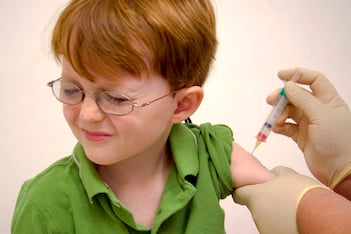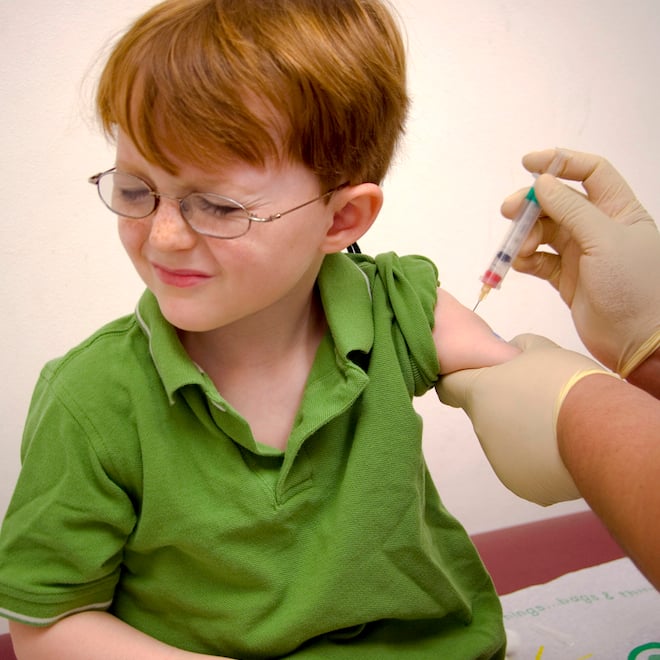
As parents, when our kids get a vaccination, it’s easy to brush off their fears. “It’ll just be a little poke,” we’ll say. Or, if they’ve reacted badly to previous shots, we might even put off or avoid vaccinations altogether. The truth is, shots can really hurt—both the initial jab and a sore arm afterwards. Rather than skirting the issue, it’s better to address the fear—and the pain—head on. The good news is, there’s lots of research-based ways that you can make shots hurt less for your kids. Here’s what to do, and what to avoid,when your child will be getting a shot.
1. Pick up a topical anaesthetic cream or patch in advance.
“Parents can buy this over the counter,” says Dr. Christine Chambers, a clinical psychologist at the Centre for Pediatric Pain Research in Halifax. You’ll need to know where the needle is going on the body, and it needs to be applied to the skin 30 to 60 minutes ahead of time. Dr. Chambers recommends asking the pharmacist to help show you how to put it on.
2. Breastfeed your baby before or during the shot.
Parents who breastfeed are lucky to have this secret weapon at their disposal. And all parents should hold very young infants skin to skin.
3. Use distraction tools.
Keep your child occupied with whatever reliably distracts them, like an iPad, your phone or a favourite book or toy. You could even ask them to look out a window or count dots on the wallpaper.
4. Don’t avoid talking to your child about the shot, and don’t sugar-coat it.
Be honest—tell them it will hurt, but not too much, and only for a brief moment. If you use a topical anaesthetic and a good distraction tool, the pain shouldn’t be too bad.
5. Describe what will happen and why the shot is important.
“Sometimes we forget to let kids know why they need shots,” says Dr. Chambers. Be sure to use age-appropriate language.
6. Don’t give your child an oral pain reliever, such as acetaminophen or ibuprofen, before the shot.
“A lot of parents think that giving oral pain medications like Tylenol or Advil will help, but they don’t reduce the pain and some research suggests they may interfere with the efficacy of [certain] vaccines,” says Dr. Chambers. You can give pain medication after the shot, though.
Feel free to ask the healthcare provider about pain management. Dr. Chambers suggests asking, “What are you going to do to help my child with pain during this procedure?”
7. Give your child something to look forward to, such as a treat, after the shot.
“With any negative experience, giving your child something positive to look forward to can change the event,” says Dr. Chambers.
8. Don’t overly reassure your child.
“Parents say ‘It’s okay, it will be over soon,’” says Dr. Chambers, “but study after study has shown that using that type of reassuring language actually makes the pain feel worse.” Research shows that when you tell a child everything is okay, he actually assumes you’re worried about what’s going to happen. “Use neutral language,” suggests Dr. Chambers.
The post Scared of needles? A parent’s guide to making vaccination shots less painful appeared first on Today's Parent.

